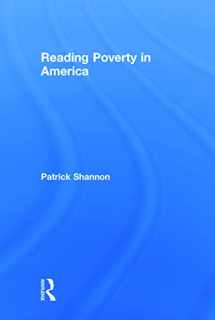
Reading Poverty in America
ISBN-13:
9780415722728
ISBN-10:
0415722721
Edition:
1
Author:
Patrick Shannon
Publication date:
2014
Publisher:
Routledge
Format:
Hardcover
154 pages
FREE US shipping
Book details
ISBN-13:
9780415722728
ISBN-10:
0415722721
Edition:
1
Author:
Patrick Shannon
Publication date:
2014
Publisher:
Routledge
Format:
Hardcover
154 pages
Summary
Reading Poverty in America (ISBN-13: 9780415722728 and ISBN-10: 0415722721), written by authors
Patrick Shannon, was published by Routledge in 2014.
With an overall rating of 3.5 stars, it's a notable title among other
books. You can easily purchase or rent Reading Poverty in America (Hardcover) from BooksRun,
along with many other new and used
books
and textbooks.
And, if you're looking to sell your copy, our current buyback offer is $0.3.
Description
In this book Shannon’s major premise remains the same as his 1998 Reading Poverty: Poverty has everything to do with American public schooling–how it is theorized, how it is organized, and how it runs. Competing ideological representations of poverty underlie school assumptions about intelligence, character, textbook content, lesson formats, national standards, standardized achievement tests, and business/school partnerships and frame our considerations of each. In this new edition, Shannon provides an update of the ideological struggles to name and respond to poverty through the design, content, and pedagogy of reading education, showing how, through their representations and framing, advocates of liberal, conservative, and neoliberal interpretations attempt the ideological practice of teaching the public who they are, what they should know, and what they should value about equality, civic society, and reading. For those who decline these offers, Shannon presents radical democratic interpretations of the relationship between poverty and reading education that position the poor, the public, students, and teachers as agents in redistribution of economic, cultural, and political capital in the United States.


We would LOVE it if you could help us and other readers by reviewing the book
Book review

Congratulations! We have received your book review.
{user}
{createdAt}
by {truncated_author}


